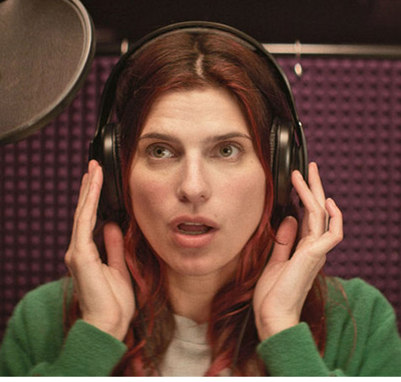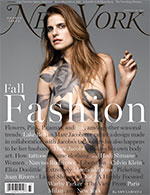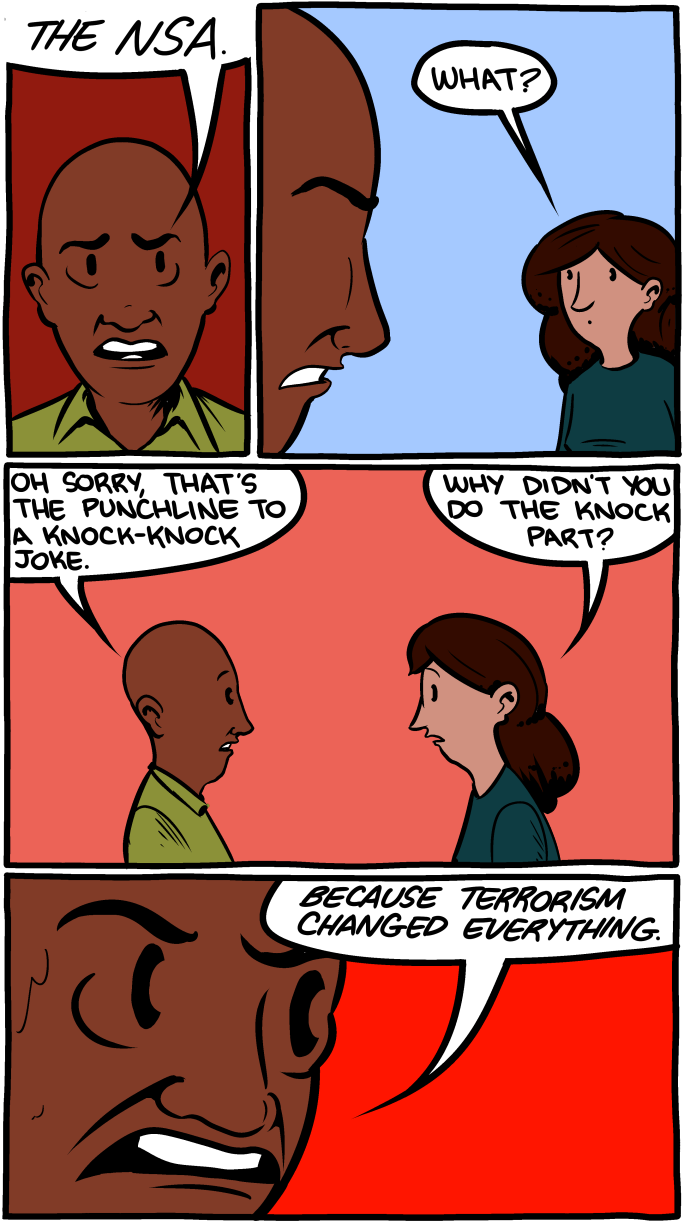Shared posts
The Joy of Reading
Rare Words
acosmist - One who believes that nothing exists
paralian - A person who lives near the sea
aureate - Pertaining to the fancy or flowery words used by poets
dwale - To wander about deliriously
sabaism - The worship of stars
dysphoria - An unwell feeling
aubade - A love song which is sung at dawn
eumoirous - Happiness due to being honest and wholesome
mimp - To speak in a prissy manner, usually with pursed lips
"Sexy baby vocal virus"
 For the past few weeks, Lake Bell has been working hard to promote her new movie In a World… NPR set the stage this way ("'In A World …' Is A Comedy About, You Guessed It, Voice-Over Artists", NPR All Things Considered 7/26/2013):
For the past few weeks, Lake Bell has been working hard to promote her new movie In a World… NPR set the stage this way ("'In A World …' Is A Comedy About, You Guessed It, Voice-Over Artists", NPR All Things Considered 7/26/2013):
Lake Bell has acted in the movies It's Complicated, What Happens in Vegas and No Strings Attached. She's been on television, on HBO's How to Make It in America and the TV series Boston Legal. And she is now starring in a movie she has written and directed. It's called In a World … — as in that instantly recognizable phrase that kicks off so many movie trailers.
In a World … is a comedy about doing voice-overs for those trailers, and Bell's character, Carol, is to movie trailers roughly what Rocky was to boxing. Underneath the comedy, it's a moving story about female empowerment — though Bell tells NPR's Robert Siegel that she doesn't like to be preached to. "I "I always hope that, you know, if I do have a message, that perhaps it is with a good sense of humor and not too soap-boxy. Just a little suds on you, to get the message across."
There's been plenty of media uptake: "In 'A World', All Voice-Overs Are Not Created Equal", Fresh Air 8/8/2013; an interview with John Oliver on The Daily Show, 8/7/2013; A.O. Scott, "All those Voices: Can You Hear Her Now?", New York Times 8/8/2013; Amanda Dobbins, "Lake Bell On In a World… and Tattoos", New York Magazine 8/11/2013; "Lake Bell Poses Nude & Covered In Tattoos for New York Magazine", Huffington Post 8/12/2013; Leah Brillson, "Lake Bell Explains Why A Woman's Voice Is Her Most Powerful Tool", Refinery20, 8/12/2013; Tess Lynch, "Lake Bell vs. 'Sexy Baby Voice'", Grantland 8/13/2013; Daniel Cowen, "'In Other Worlds…' — Heeb Reviews Lake Bell’s Directorial Debut: In A World", Heeb 8/13/2013; Mark Caro, "With 'In a World …,' Lake Bell puts her film where her mouth is", Chicago Tribune 8/13/2013; "Interview: Actress Lake Bell Writes, Directs ‘In a World…’", HollywoodChicago.com 8/14/2013; Norman Wilner, "Lake Bell: Versatile artist pipes up in eccentric voice-industry send-up In A World…", Now Toronto 8/16/2013; Ken Eisner, "Lake Bell spins In a World… her way", straight.com 8/14/2013; and many, many more.
Bell's movie is about a young woman trying to break into the male-dominated world of voice-over acting. As she puts it in her interview on NPR's All Things Considered:
I was always interested in the idea that the omniscient voice was always considered male. This sound that's telling you what to buy, what to think, how to feel about what bank to have, or what kind of car, or what movie to see. So I thought it would be an interesting protagonist to have a female vocal coach who would sort of aspire to take on this world.
But her interviews all stress the idea that women themselves are to blame for their exclusion, or at least are strongly complicit in it. Thus in her interview with Katherine Monk ("Interview In a World… film director Lake Bell with video", Canada.com 8/14/2013) she says:
There is one statement in this film and I am vocal about it: There is a vocal plague going on that I call the sexy baby plague, where very smart women have taken on this affectation that evokes submission and sexual titillation to the male species,” she says.
“This voice says ‘I’m not that smart,’ and ‘don’t feel threatened’ and ‘don’t worry, I don’t want to take charge,’ which is a problem for me because it’s telling women to take on this bimbo persona in order to please a man.
Or in the ATC interview:
OK, small soap-box moment. I have been personally ruptured and unsettled by the trend, the vocal trend that I call sexy baby vocal virus talking. So it's this is – not only is it pitch, so really high up, but it's also a dialect. It's like a speech pattern that includes uptalking and fry, so it's this amalgamation of really unsavory sounds that many young women have adopted. It's a pandemic, in my opinion.
Asked what it sounds like, she responded:
It would sound like this, and, like, we would just have this way of speaking. And it's not necessarily that I'm, like, stupid. It's just that what I'm saying makes me sound less than. And so, for me, I find that – like I can't have people around me that speak that way, and mainly because I am a woman, and I grew up thinking a female voice and sound should sound sophisticated and sexy and a la Lauren Bacall or Anne Bancroft or Faye Dunaway, you know? Not a 12-year-old little girl that is submissive to the male species.
Ms. Bell is a talented mimic: in addition to pitch and voice quality, she uses vowel retraction, for instance in her pronunciation of "this" as something like [ðæəs]:
 But she mixed her message a bit — though increasing her media coverage — by posing nude on the cover of the August 19 issue of New York Magazine. While she certainly doesn't present herself there as a 12-year-old girl, some people might think that the magazine cover puts other "bimbo" stereotypes within reach. At least, nude magazine covers were not part of the way that Don LaFontaine and Carl Kassell built their case for "omniscient voice" status.
But she mixed her message a bit — though increasing her media coverage — by posing nude on the cover of the August 19 issue of New York Magazine. While she certainly doesn't present herself there as a 12-year-old girl, some people might think that the magazine cover puts other "bimbo" stereotypes within reach. At least, nude magazine covers were not part of the way that Don LaFontaine and Carl Kassell built their case for "omniscient voice" status.
In any case, Bell's "sexy baby vocal virus" idea has gone viral, collecting many thousands of diverse and mostly positive comments, many of them from women. Thus here are the first few comments on her ATC interview:
I work at a private university. I am an old woman surrounded by squeaky-toy voices. Thank you for making me laugh about it.
Yeah…I call it 'Ball of butter in the back of the throat syndrome.."
That squeaky-toy voice drives me nuts. We have a few younger ladies in our workplace who started out sounding like that, but quickly learned that it wasn't professional, and started sounding more like adults.
FINALLY … A woman calls out this awful baby talk, 1982 Valley Speak trend of young women. Agreed 100 percent Lake Bell.
The scary part is that there are more than a few of these godawful squeaky girl voices on NPR. The "woman" (can't tell by here voice) who co-hosts "Science Friday" is, to me, un-listenable.
I was hysterically laughing while listening to Lake Bell. Every time I hear a grown woman with that squeaky baby girly voice that ends in "like a question" even thought it's not a question, I cringe and roll my eyes! I'll bet Lake can imitate Vicky Pollard from Little Britain!
I thought I was the only one taken aback by the current epidemic of 20-something women increasingly sounding like a blase Mickey Mouse -or Mice. My boyfriend and I call them "Yaaah Girls" – as in "I had a whole Greek Yogurt before yoga and it totally bloated me in class" – "Yaaaaah." [...] In a world where I wish I could punish these girls with impunity, someone give me Lake Bell's kickboxing skills from What Happens In Vegas and very fast legs…
The "sexy baby vocal virus" trend is ridiculous on the surface but also speaks to the thoroughly depressing way that young women view themselves and are viewed by others.
As a linguist, I'm always happy to see so many people so interested in how other people talk. But there are a few things about this epidemic of anti-female-vocal-virus discussion that bother me.
First, the annoying (to them) features that commenters bring up are all over the place, and it's not clear that the discussion is about an identifiable speech style, as opposed to a long list of things about various female-associated vocal features that people don't like.
Second, at least two of the features that Lake Bell mentions or imitates — vocal fry and retracted (backed and lowered) vowels — actually represent women's attempt to sound more like men (or at least to sound larger), with lower-pitched vowels and lower frequency vocal-tract resonances. (At least, this is true to the extent that such effects are gender-linked and not just general phenomena that become part of a gender stereotype.)
Third, I'd be willing to make a small wager that at least some of the features that annoy Bell are actually commoner in female-to-female speech than in female-to-male speech. Many of the commenters' examples of annoying speech come from young women talking among themselves.
Fourth, I haven't seen any evidence that there's anything really new here. Consider this passage from a 1985 interview with Carol Channing ("How Carol Channing became Carol Channing", in James Kirkwood, Diary of a Mad Playwright):
"My mother was just like this. I was never going to be pretty, I was too tall, I was. . . . Look, somebody nominated me for secretary of the student body in school — I was eight years old, okay — and the procedure was, I had to get up onstage in the school auditorium and make my campaign speech. Well, I didn't know what to say. I couldn't say I was smarter than they were, I couldn't say I was better in any way [...]
"Because, if a mother gets a Mary Martin or a Carol Channing, she's got this mushroom coming up under her and it's very frightening and disconcerting, because she doesn't know what to do. She can't rescue you, because you're not a cripple, so she makes you a cripple. 'Goddamnit, you're going to be a cripple!' And, woman to woman, they beat you up.
"So suddenly you're onstage and you find out the whole thing's a lie, it's not true, and on top of which, although I'm not the cutest girl in class, never was, and very tall, and . . . I could act like Marjorie Gould, and did Marjorie Gould for them and –" now Carol's voice switched to sexy babytalk — "and I did Marjorie Gould for them, and I swished my ass around that stage like Marjorie Gould never thought of doing, and it was so exciting and so sexy, and I did it better than Marjorie Gould! Well, naturally I got elected."
Since Carol Channing was born in 1921, this episode would have happened in 1929, 50 years before Lake Bell was born. It's certainly possible that the techniques that Carol Channing learned in 1929 have recently spread like an epidemic among young American women, but frankly, I'm skeptical that the prevalence of the "sexy baby voice" syndrome has changed much in the past decade, or even the past century.
For more, you should read Jessica Grose, "Why Is Lake Bell Dissing Women’s Voices?", Slate 11/9/2013, which ends with this sensible remark:
I agree with Bell that making yourself sound younger or dumbing yourself down on purpose won’t be great for your career. But, what she’s advocating is that women should have low voices to sound smart, or even sexy. Since she obviously cares about advancing women, maybe she should stop instructing them that they need to sound like dudes.
An earlier episode of collective annoyance at similar features in the speech of (certain) young women occurred in 2006, as discussed in these LL posts:
"The Affect: Sociolinguistic speculation at the NYO", 3/22/2006
"Further thoughts on 'The Affect'", 3/22/2006
And there was an even earlier outbreak, starting in the early 1990s, focused on "uptalk":
"This is, like, such total crap?", 5/15/2005
"Uptalk uptick", 12/15/2005
"Angry Rises", 2/11/2006
"Uptalk is not HRT", 3/28/2006
"Uptalk anxiety", 9/7/2008
"The phonetics of uptalk", 9/13/2008
"Uptalk v. UNBI again", 11/23/2008
"Elementary-school uptalk", 11/30/2008
Some other relevant posts:
"Nationality, Gender and Pitch", 11/12/2007
"Mailbag: F0 in Japanese vs. English", 11/13/2007
"How about the Germans?", 11/14/2007
"Vocal fry: 'creeping in' or 'still here'?", 12/12/2011
"More on 'vocal fry'", 12/18/2011
you + your shadow: who is the “necessary opponent” in your life story?
If you don’t have any shadows, you’re not in the light. — Lady GaGa
1
I came across a phrase I liked in John Truby’s excellent THE ANATOMY OF STORY: necessary opponent.
Truby uses it in the context of storytelling, but you could also apply it to life.
In fiction, when you’re thinking up your protagonist, you can’t create him in a vacuum. She exists within – and is defined by – a web of other characters.
And no hero can be a hero without an antagonist.
I’m not exaggerating, writes Truby,
when I say that the trick to defining your hero and figuring out your story is to figure out your opponent. …This relationship determines how the entire drama builds…Structurally the opponent always holds the key, because your hero learns through his opponent. It is only because the opponent is attacking the hero’s great weakness that the hero is forced to deal with it and grow.
In other words, the main character is only as good as the force(s) she battles. Protagonist and antagonist drive each other to increasing levels of greatness.
So the opponent has to be necessary, in that she is the one person in the world who can zero in on the heroine’s weakness.
The heroine must overcome this weakness, learn from it, or be destroyed in some way (end the story at a lower point than when she began).
2
We exert so much energy avoiding conflict — but fiction is all about meaningful conflict. Conflict, conflict, conflict, as any writing instructor will tell you. Why? Because meaningful conflict is the crucible that exposes character, boils out the essence and then transforms it. Conflict forces us to grow and change – or die trying (and what is stagnation except a death-in-life?).
And perhaps the reason why human beings have such a driving need for stories – why nature hardwired us this way – is because we look to them to show us how to deal with challenge and change. How to come of age, how to love, be moral, live well and, when the time comes, how to die well. In a conversation with Bill Moyers, the beloved scholar Joseph Campbell explained that all myths are about “the maturation of the individual”. We want to become contributing members to society; we want to grow past our small frightened selves and into a much larger picture. That’s how we find and make meaning. Stories point the way.
3
When I was a teenager I became fascinated with the Dark Knight Returns graphic novels, especially the relationship between Batman and the Joker, how they serve as dark reflections of the other. I always loved that movie cliché where, during the final battle, the bad guy tells the good guy some variation of, “You’re just like me.”
Jungian analysts say that in a dream, every character represents some part of the dreamer. In a story – the fictive dream – characters tend to represent some aspect of the protagonist: who she was, is, or could be.
When antagonist and protagonist compete for a goal that only one can win, it’s not just two individuals battling it out but two opposing sets of values, of living and being, that each represents. How the conflict resolves reflects the writer’s final overall message (otherwise known as a theme).
So, as Truby points out, a human antagonist must double the protagonist in some way. The antagonist is who the protagonist would be if she lost her moral vision. The antagonist is her Shadow: the buried, repressed parts of the personality that the protagonist has sent underground. By dealing with the antagonist, the protagonist is really dealing with the dark qualities of herself. A triumphant protagonist learns how to integrate those qualities, to take what she needs, apply them to her situation, and grow and evolve to higher consciousness.
In life, we are constantly creating, or co-creating, our ongoing life stories, based on how we choose to interpret the world around us, the weight and meaning we assign to events. We tell ourselves a story about who we are, and whatever doesn’t fit that self-definition gets cut off and cast out – and forms our Shadow.
Trapped by our blindspots, the limits of our self-preconceptions, we can’t see our own Shadow until someone else throws it back. They do this when they trigger us, often just by being who they are. We can’t see them clearly. We see instead the Shadow we’re projecting, the qualities in ourselves that we have disowned…but come surfacing back to us when we see them, or think we see them, in the other person.
So maybe that other person becomes our necessary opponent: necessary for us to learn from in order to learn about ourselves – and mature as human beings.
Perhaps the necessary opponent of your life isn’t one person but a series of people with certain traits in common, traits that always trigger you because you haven’t dealt with them in yourself.
Maybe when you learn to love your enemy, you’re learning how to love that shadow aspect of yourself: to find the gold in the darkness, the strength and the wisdom. Maybe that’s why forgiveness is so powerful. In the act of forgiving someone else, you’re forgiving a despised and neglected aspect of yourself. click to tweet
4
We learn to love ourselves through loving other people; we learn to love other people through loving ourselves.
We are tangled up in each other.
We are one.
EL ARTE DE BESAR (I)
20 BEST WINDOWS 7 START MENU AND TASKBAR TIPS AND TRICKS
1320 New York Avenue N.W.
Weird Methods
Anyway here's the song, hopefully you will like it: Weird Methods (tumescent elephant mix)
The Story of the Christian Faith
The Christian story begins with a Galilean woodworker who preached certain things, did certain things and died in a certain way, only to—surprise!—rise from the dead. What we know most unquestionably about this man and his followers is that they were Jews and they assumed their hearers were Jews.
This is why the gospel Matthew begins with a genealogy of Jesus (Matt.1.1-16). To Matthew (and, yes, his committee of scribes and redactors associated with the church at Antioch) the important thing is to show that Jesus (Yeshua? Yehoshua?) was as Jewish as Jews come.
The evangelist therefore traces forward from Abraham, father of the Jewish people, and unquestionably still held out to be a real actual historical figure (whether or not his paternity applies to all present day Jews).
Abraham begot Isaac, who begot Jacob, who begot Judas (not Jesus' Judas), who begot Phares ... all the way to Jacob (not Isaac's Jacob), who begot Joseph the husband of Mary, "of whom was born Jesus, who is called Christ."
Christ is simply Greek for the Hebrew Messiah, or Savior—not Jesus' last name. Jesus may have been called Yeshua ben Yosif, Jesus son of Joseph.
The evangelist Luke, thought to be one of Paul of Tarsus' converts to the faith, and also a doctor, takes a different tack. Luke, a Gentile, wants to convey Jesus' humanity so he goes back all the way to Seth and Adam.
Both Matthew and Luke, although they differ in parts, go through David to Abraham. Jesus has to claim not only Jewish roots, but a royal ancestry.
The gospel of Mark picks up the story much later, when John the Baptist and Jesus are grown up men going about saying unusual things in public.
John, the last canonical gospel, that is, the last one traditionally accepted as reflecting the teaching of the original followers of Jesus, skips much further back than even Luke to the beginning of everything: "In the beginning was the Word."
John, the youngest of Jesus' close disciples, who probably declaimed his version to church scribes in the island of Patmos decades after the events, was cutting to the chase, to the very beginning, Genesis 1:1, the first sentence of the entire Bible:
"In the beginning God created heaven, and earth." John makes the point of telling us that Jesus, as the Word, was there.
A man is in Hospital bed wearing an oxygen mask over his mouth. "Nurse" he ...
The nurse raises his gown, holds his cock in one hand and his balls in the other. She takes a close look and says, "There's nothing wrong with them sir."
Man pulls off the oxygen mask, smiles at her and says very slowly: "Thanks for that. It was lovely but listen very very carefully ... Are-my-test-results-back?!"










